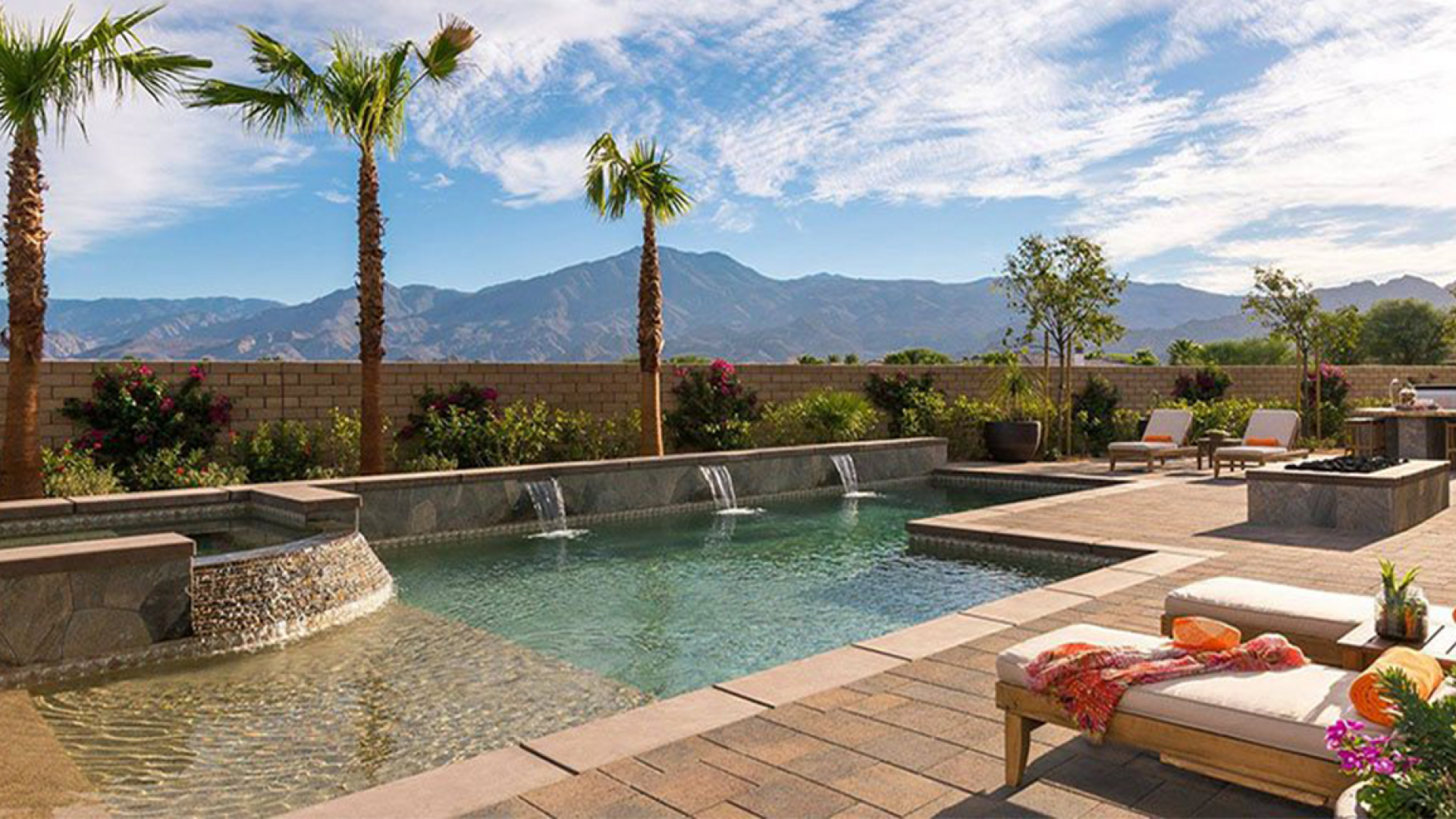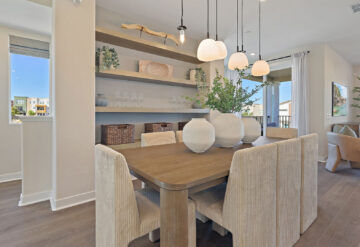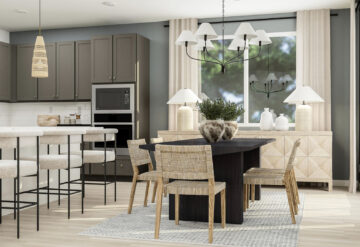By Edward Pendergast
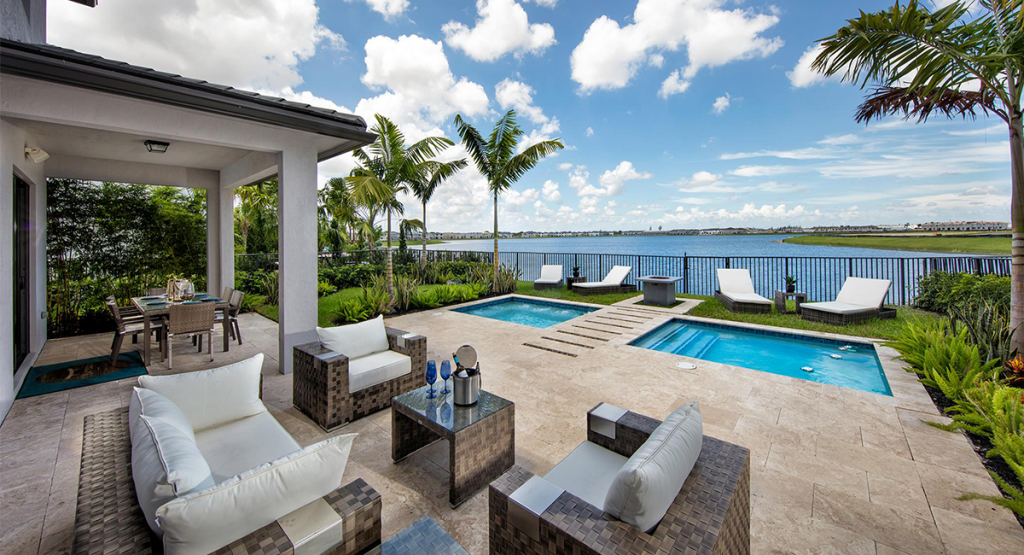
You’ve decided to take the plunge and install a pool in your yard. To fully enjoy its shimmering beauty, you’ll need to carefully consider the landscaping surrounding it.
Plant Native
You can use plants to create many different moods, from tropical oasis to a modern resort. Plant palm trees or hedges to create privacy and some shade. Ornamental grasses, flowering plants, and cacti to add texture. Full-sun perennials provide a pop of color around your pool. Since they don’t die after flowering, there will be less clean-up work. As with any landscaping plan, use native plants that thrive in your area. They’ll need less water, fertilizer, and maintenance. The USDA plant hardiness zone map can help you learn what will grow in your specific zone.
Chlorine and Salt Tolerant
The plants you choose need to be chlorine-tolerant and able to deal with other pool chemicals. This is especially important in the areas closest to your pool. For example, if you have a saltwater pool, nearby plants need to be salt-tolerant in case they get splashed.
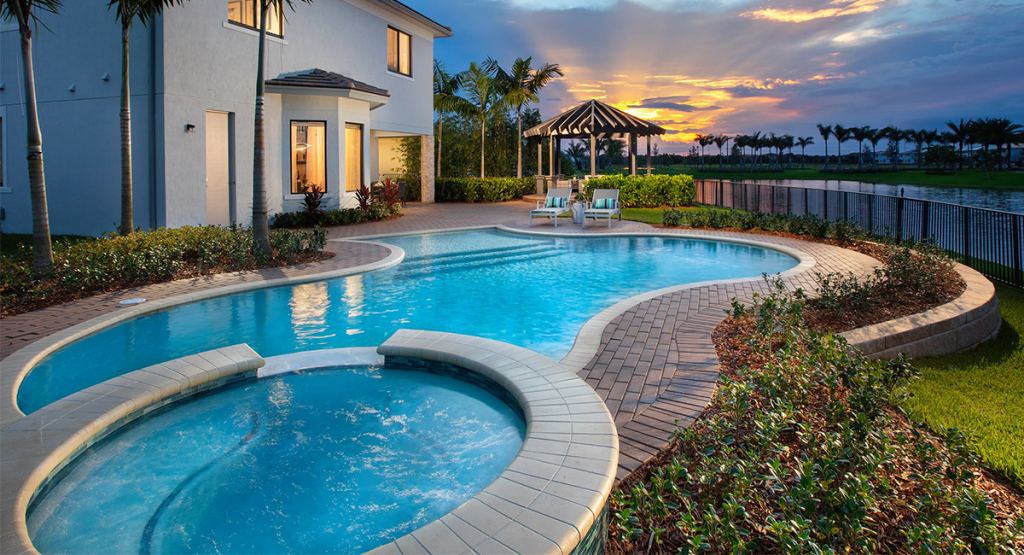
“Neat” Trees
Avoid plants and trees with a lot of drop leaves to save the constant work of removing leaves from your pool. You’ll also want to stay away from “messy” trees that drop filter-clogging seed pods, fruit, dead flowers, and other debris. Deciduous trees are good choices because they only need one clean-up effort per year. Evergreens are a poor choice because you’ll be picking up pine needles throughout the year. Any trees with branches hanging over your pool are a no-no. Also, stay away from plants that need shade. Pools are usually placed in areas with full sun, so choose plants that can take the heat.
Shallow Roots
Another consideration with trees is their root systems. You want trees with shallow, non-invasive roots. Larger root systems can damage plumbing and crack concrete. Palm trees are a good choice in tropical or subtropical areas. Their roots grow straight down and don’t spread. Citrus trees are another good option. Consider growing these in a container. That way you can move them around to follow or protect from the sun. Dwarf varieties do especially well in containers.
You’ll want to keep in mind a plant or tree’s full size at maturity. Will it block the view when fully grown? Will it overtake the pool’s deck or the pool itself in three, five or ten years? Your ponytail palm may look small and charming as a houseplant, but it can grow to 30 feet tall and 12 feet across at the base when planted in the ground. That could do considerable damage if planted close to your pool.
Mind the Mosquitoes
If you live in a climate prone to mosquitoes, you can choose plants like citronella that help repel these pests. Proper pool maintenance will also help. Filter your pool’s water daily, check and balance chemical levels regularly, and use a pool cover when you’re not using the pool. Dry pool toys and rafts and remove other sources of standing water that can attract mosquitoes.
While most pool landscaping choices will depend on your climate, you can follow these suggestions for a beautiful yet easy-to-care-for design.

